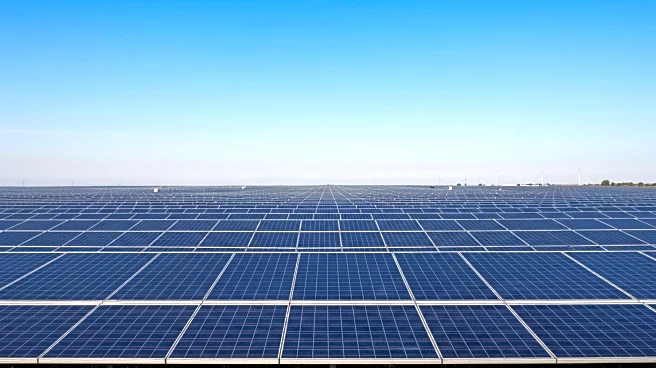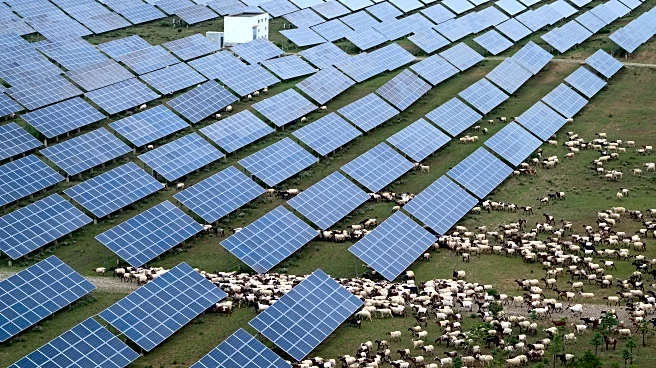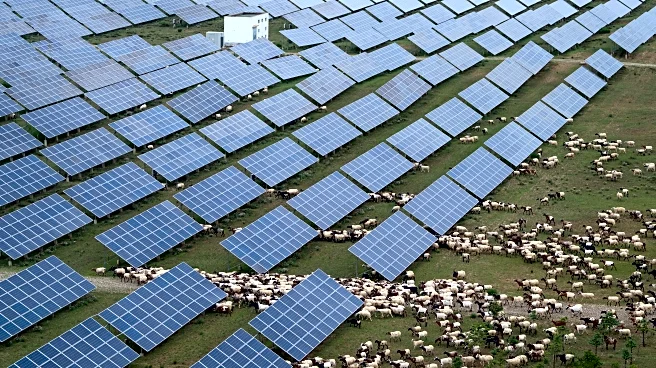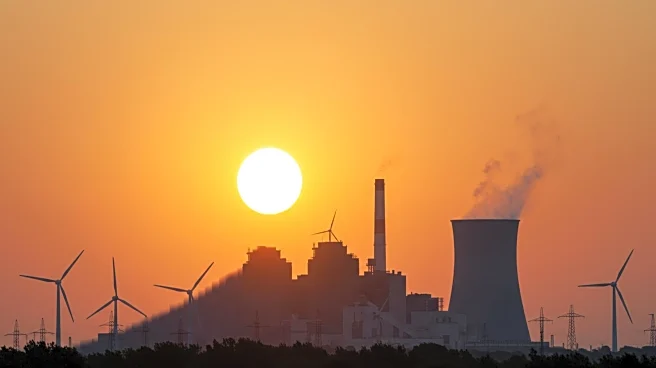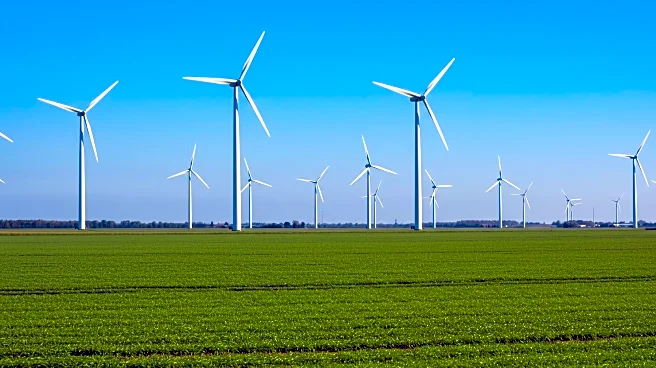Rapid Read • 7 min read
China is rapidly advancing its solar energy capabilities with the construction of what is projected to be the world's largest solar farm on the Tibetan plateau. Covering 235 square miles, the project is part of China's efforts to achieve carbon neutrality by 2060. Recent studies indicate a 1% reduction in China's carbon emissions in the first half of 2025, suggesting a potential peak ahead of the 2030 target. The solar farm, once completed, will generate enough power for 5 million households. However, challenges remain in efficiently distributing this energy due to the current grid's reliance on coal plants.
AD
China's solar farm project represents a significant step in global efforts to combat climate change. As the world's largest emitter of greenhouse gases, China's transition to renewable energy sources is crucial for reducing global emissions. The project demonstrates that economic growth can be achieved alongside emissions reduction. However, China's continued reliance on coal poses a threat to progress. The success of this initiative could inspire other nations to invest in renewable energy, potentially leading to a global shift towards cleaner energy sources.
China plans to build transmission lines to transport electricity from the solar farm to populous regions in the east. This requires significant changes to the grid management system, which currently favors coal plants. Policymakers are working to address these challenges, aiming to optimize the use of renewable energy. The project's completion will be closely monitored by international stakeholders, as it could set a precedent for large-scale renewable energy projects worldwide.
AD
More Stories You Might Enjoy
